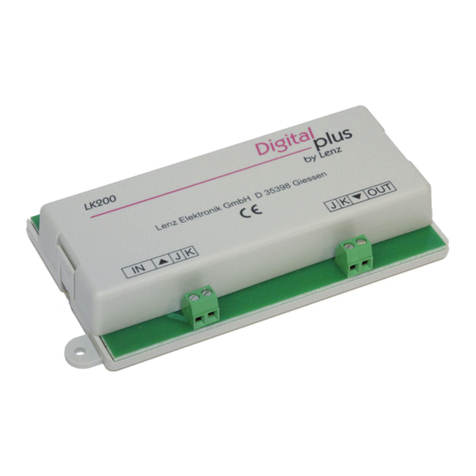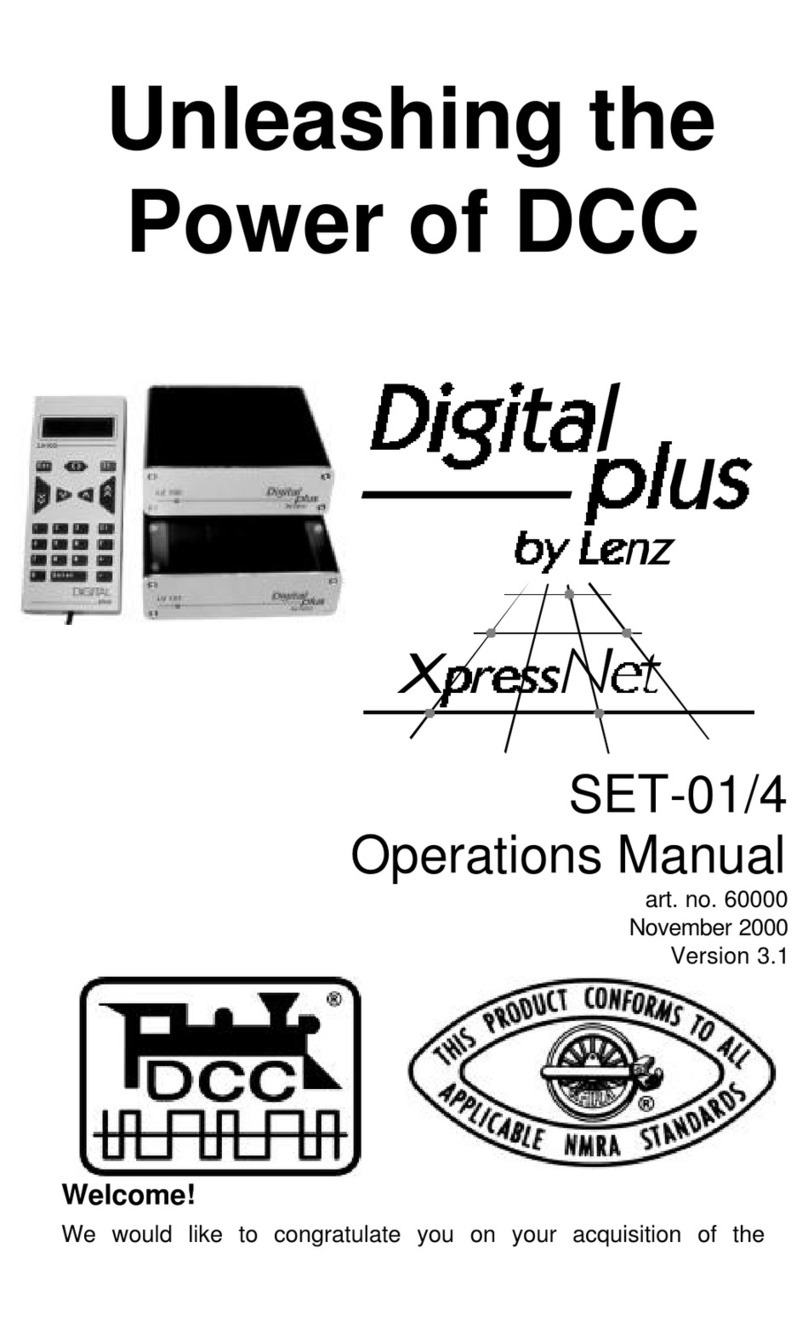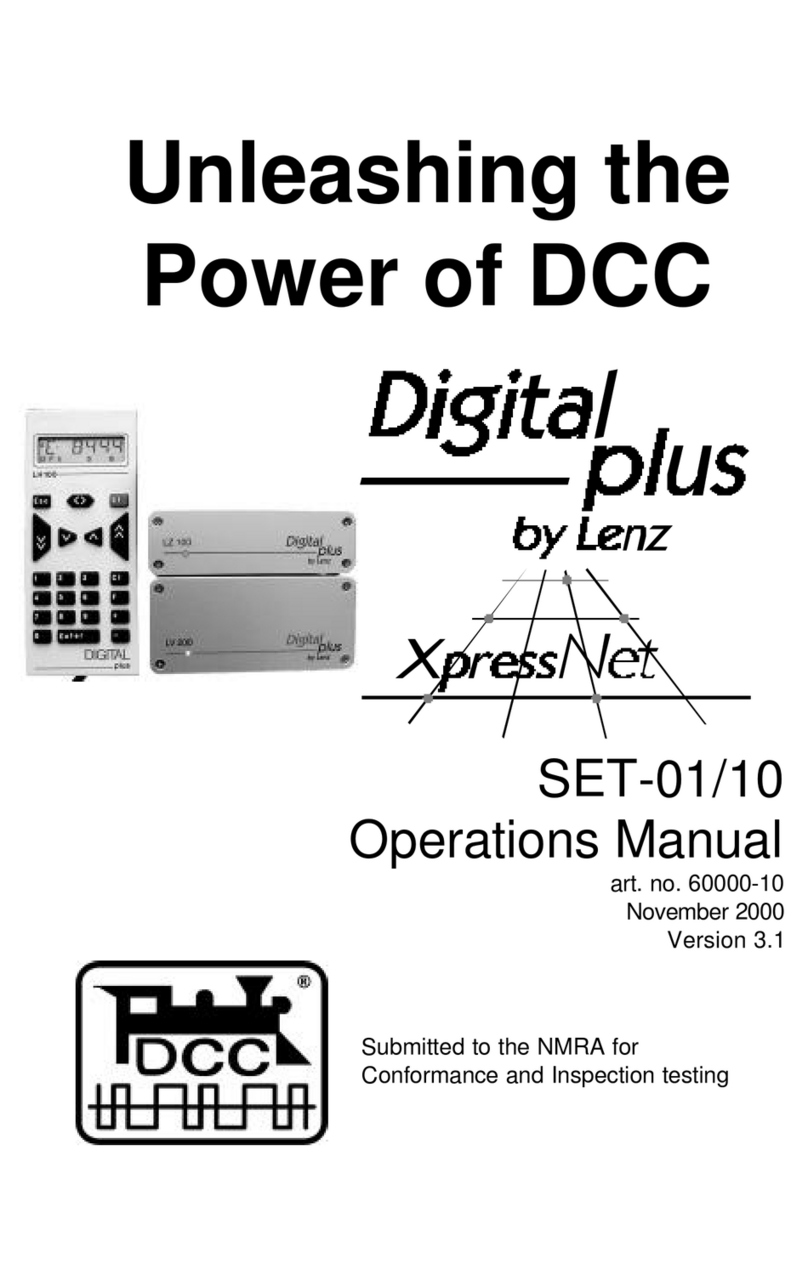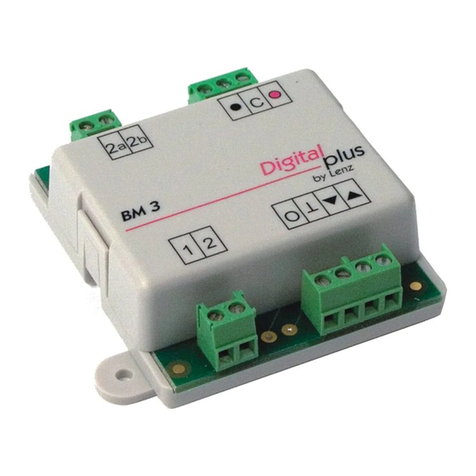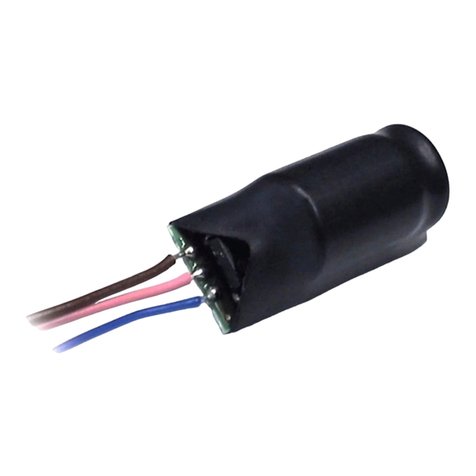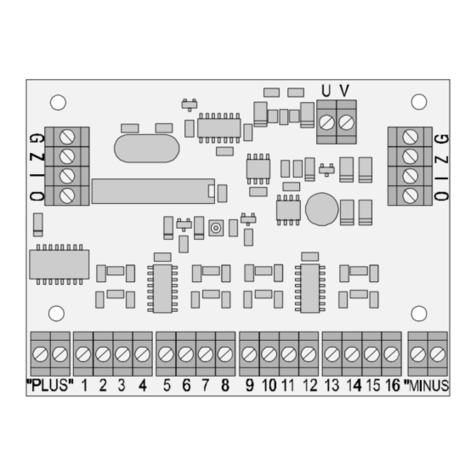
2LT100 Digital Circuit Breaker
Prerequisites for displaying feedback information
With LW130 you can display feedback information that comes
from feedback capable accessory decoders LS100 or feedback
encoder LR100.
If you want to make the position of a turnout (or signal) visible on
your control panel, then the drive of that turnout (or signal) must
be connected to a LS100. The respective feedback inputs and
also the feedback bus (R,S) must be connected as well.
The positions of a device connected to the non-feedback capable
LS110 can not be displayed.
Occupancy status can be made visible when you use track
occupancy detector LB100 in connection with feedback encoder
LR100.
Installation
LW130 has 5 holes for mounting using the enclosed screws. Use
the plastic tubes as spacers. Be careful not to damage or bend
any components on the module when tightening it down. If you
use screws other than those included, please make sure not to
exceed the maximum diameter of 3 mm (1/8”). The screw heads
must also not touch traces or components on the circuit board.
Connecting to LW100
The terminal row labeled “GZIO” is to be connected with the
corresponding terminals on LW100. The “GZIO” terminals are
present twice on LW130. It does not matter which one you use for
connecting to LW100. The other terminal set can then have
additional LW130 or LW120 modules connected to it. The order of
connection is hereby arbitrary.
Connecting the supply power
LW130 needs a separate power supply of 10-16V AC or DC such
as the TR16. This power supply is connected to terminals UV.
Operation with too high voltage will damage LW130! Damage
from operation with too high voltage is not covered by the
warranty!
You can connect LW100, LW120 and LW130 together to the
same transformer, as long as the capacity of that transformer is
large enough. The supplying transformer must be able to deliver
the sum total of all the connected devices.

